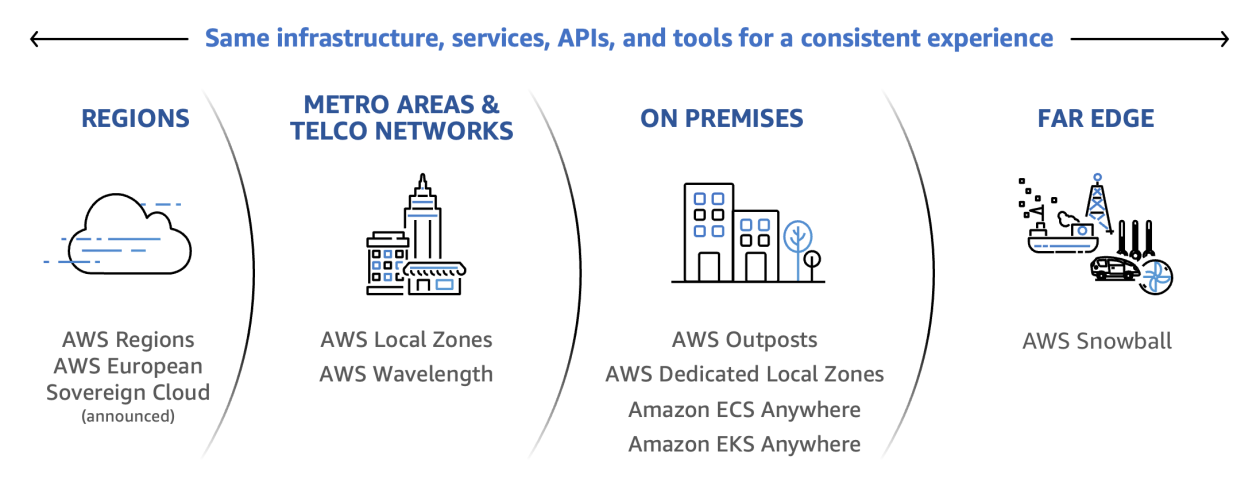Amazon Web Services (AWS) Maintains Leadership in Gartner’s Magic Quadrant for Distributed Hybrid Infrastructure
In the ever-evolving landscape of cloud computing and infrastructure solutions, Amazon Web Services (AWS) continues to solidify its position as a leader. Recently, Gartner released its second Magic Quadrant for Distributed Hybrid Infrastructure (DHI), reaffirming AWS’s leadership in this domain. This recognition is not just a testament to AWS’s commitment to innovation and customer satisfaction, but also to its proficiency in providing versatile infrastructure solutions that cater to a wide range of needs.
AWS’s prominence in Gartner’s Magic Quadrant is supported by its notable products within the DHI portfolio, namely AWS Outposts, AWS Snowball, and AWS Local Zones. These offerings collectively empower businesses to extend their cloud infrastructure across various environments, including data centers and edge locations. This is particularly beneficial for organizations looking to migrate from traditional private cloud setups to more agile and scalable solutions.
Understanding Distributed Hybrid Infrastructure (DHI)
Distributed Hybrid Infrastructure is a concept that combines traditional on-premises infrastructure with modern cloud computing capabilities. This hybrid approach allows organizations to leverage the flexibility and scalability of the cloud while maintaining control over certain workloads on their own premises. Gartner’s Magic Quadrant evaluates DHI providers based on their ability to execute and the completeness of their vision. The ability to execute assesses how effectively a vendor delivers its services, while completeness of vision examines the vendor’s understanding of the market and its strategy for future growth.
AWS’s Strengths Highlighted by Gartner
According to Gartner, AWS excels in several key areas that contribute to its leadership status:
- Leading Public Cloud Provider: AWS’s DHI solutions are particularly attractive to existing AWS public cloud customers who wish to extend their infrastructure to data centers and edge locations. This extension is crucial for organizations that require low-latency connections and local data processing capabilities.
- As-a-Service Delivery: AWS Outposts offers a fully managed infrastructure delivery model, simplifying operations and enabling organizations to adopt a hands-off approach to infrastructure management. This model also facilitates seamless integration with existing on-premises technologies.
- AWS Support: The quality of AWS’s global support and services team is another factor contributing to its high rankings. Gartner clients have reported high levels of satisfaction with the support they receive from AWS, further reinforcing the company’s reputation for customer service excellence.
AWS’s consistent performance in Gartner’s evaluations reflects its dedication to providing innovative solutions for workloads that require localized data processing, low latency, and integration with on-premises systems. By extending AWS infrastructure, services, APIs, and tools to wherever they are needed, AWS ensures a consistent cloud experience across different environments.
A Unified Cloud Operating Model
One of the standout benefits of AWS’s DHI solutions is the ability to standardize on a unified cloud operating model. This standardization simplifies the deployment and management of applications across various environments, reducing the time, resources, and operational risks associated with IT infrastructure management. Whether workloads are running in AWS Regions, metro areas with AWS Local Zones, on-premises with AWS Outposts, within telecommunications networks with AWS Wavelength, or at the edge with AWS Snow Family, businesses can streamline their operations through consistent cloud practices.
Innovations and Enhancements by AWS
AWS continues to innovate by introducing new features and capabilities to its DHI portfolio. For instance, the latest generation of GPU-backed instances has been added to AWS Local Zones, enhancing support for machine learning workloads. Additionally, AWS has expanded the number of Local Zones locations, further increasing accessibility and scalability for customers.
AWS Outposts has also seen significant enhancements. It is now available in more countries, and the range of AWS services supported on Outposts has been expanded to facilitate migration and disaster recovery efforts. Notable services include AWS Elastic Disaster Recovery and Amazon Route 53 Resolver, both of which enhance application availability and performance.
Furthermore, AWS has improved the disconnection tolerance for container-based workloads on Outposts. This enhancement allows customers to run both the Kubernetes control plane and nodes locally, boosting the capabilities of multi-rack Outposts deployments.
Conclusion
The recognition of AWS in Gartner’s Magic Quadrant for Distributed Hybrid Infrastructure underscores its leadership and innovation in the cloud computing space. By offering a comprehensive suite of DHI solutions, AWS empowers organizations to seamlessly extend their cloud infrastructure to meet diverse business needs. The continued enhancements and innovations introduced by AWS demonstrate its commitment to providing flexible, scalable, and reliable cloud solutions for its customers.
For those interested in exploring the full details of AWS’s capabilities and Gartner’s evaluation, the complete 2024 Gartner Magic Quadrant for DHI report is accessible online. This report provides valuable insights into the competitive landscape of DHI providers and highlights the strengths and areas for improvement among the leading players.
In conclusion, AWS’s leadership in this space is not only a reflection of its technological innovations but also of its unwavering dedication to customer satisfaction and service excellence. As the demand for hybrid infrastructure solutions continues to grow, AWS remains at the forefront, shaping the future of cloud computing and empowering businesses to thrive in an increasingly digital world.
For more information, visit the official AWS website.
Disclaimer: Gartner does not endorse any vendor, product, or service depicted in its research publications, and it does not advise technology users to select only those vendors with the highest ratings. The opinions expressed in Gartner’s research publications belong to its research organization and should not be construed as statements of fact. Gartner disclaims all warranties regarding this research, including any implied warranties of merchantability or fitness for a particular purpose.
For more Information, Refer to this article.


































